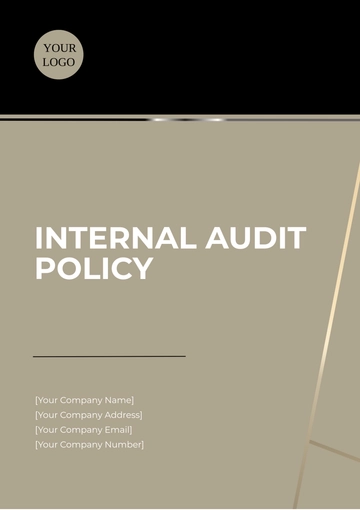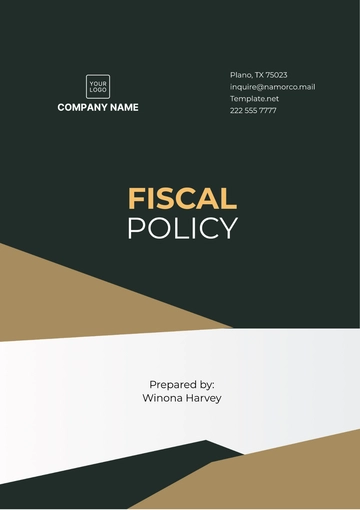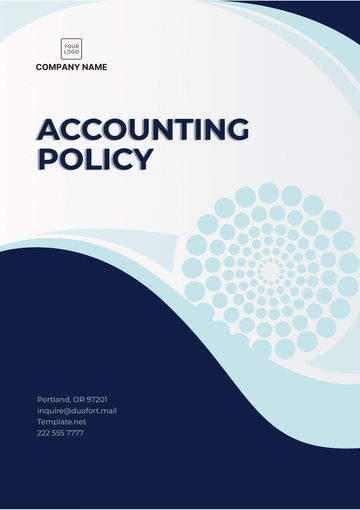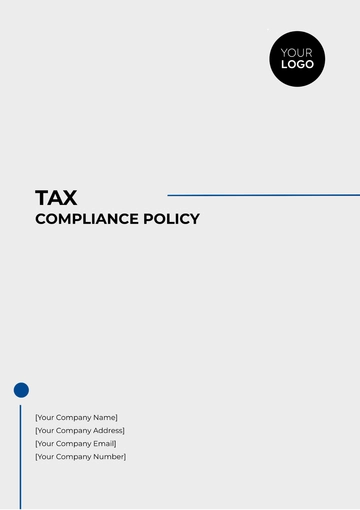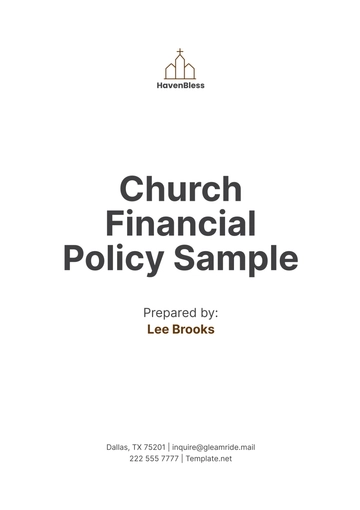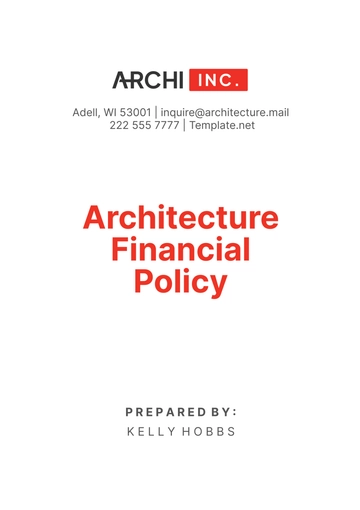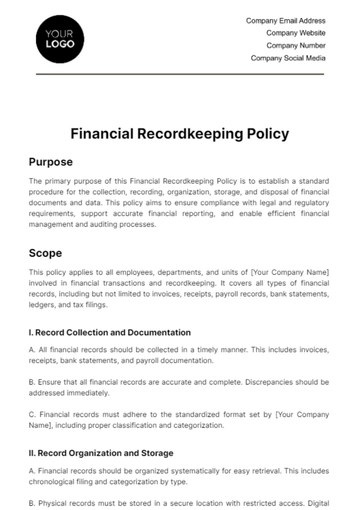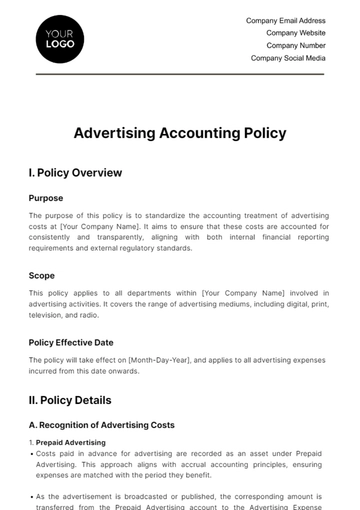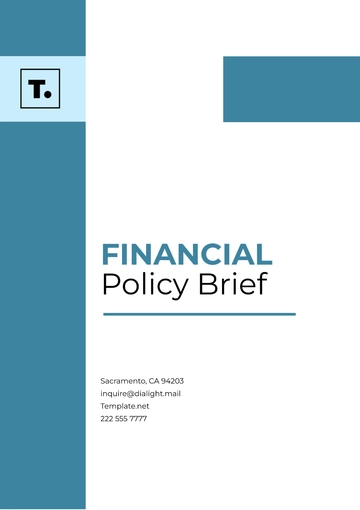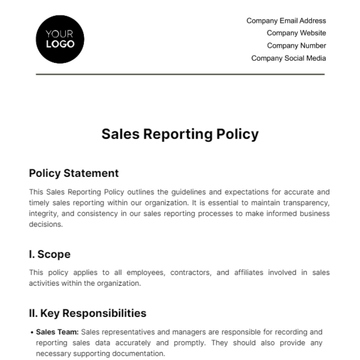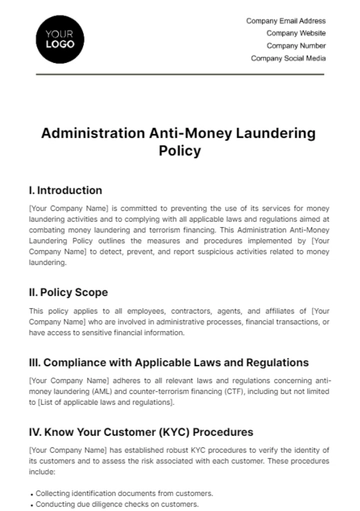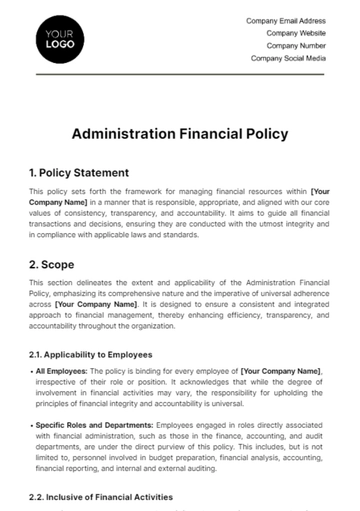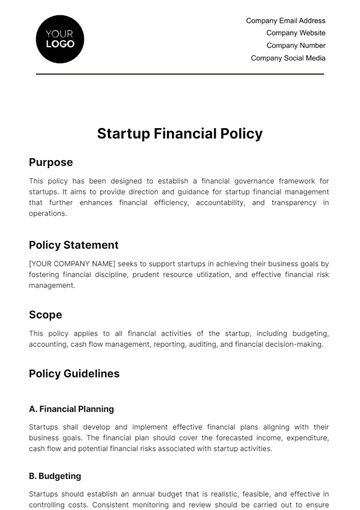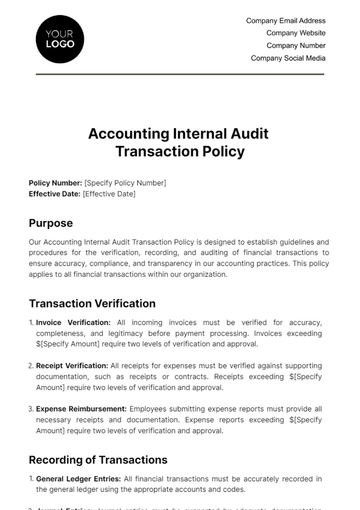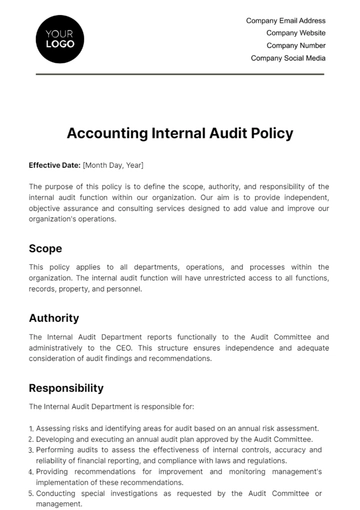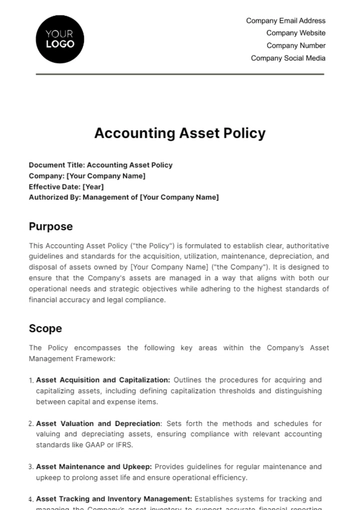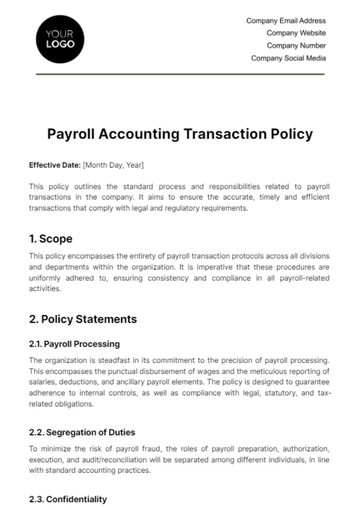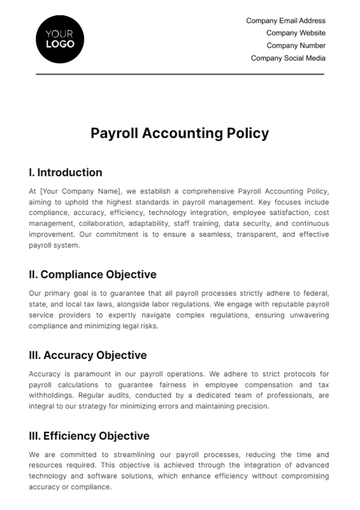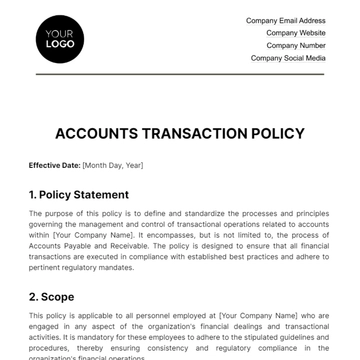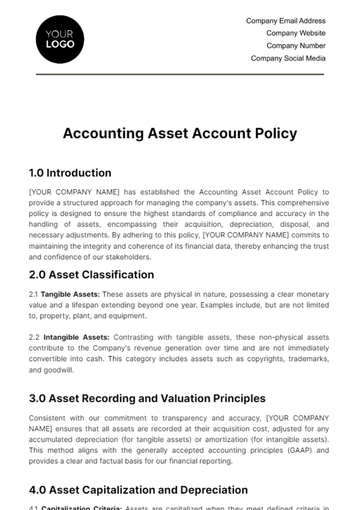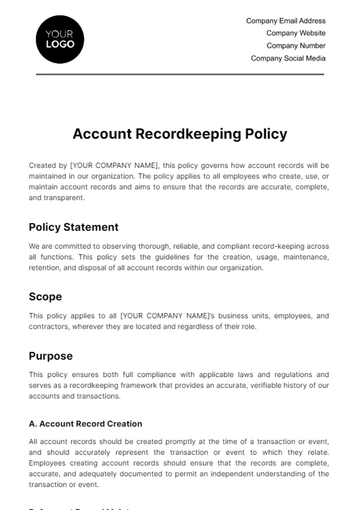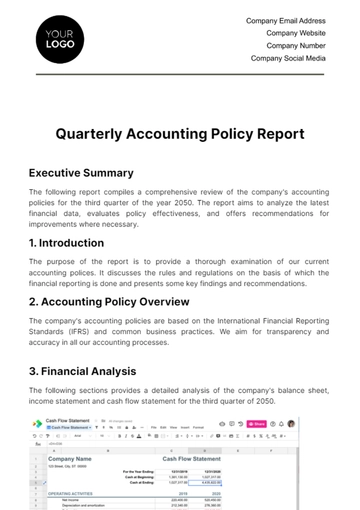Free Advertising Accounting Policy
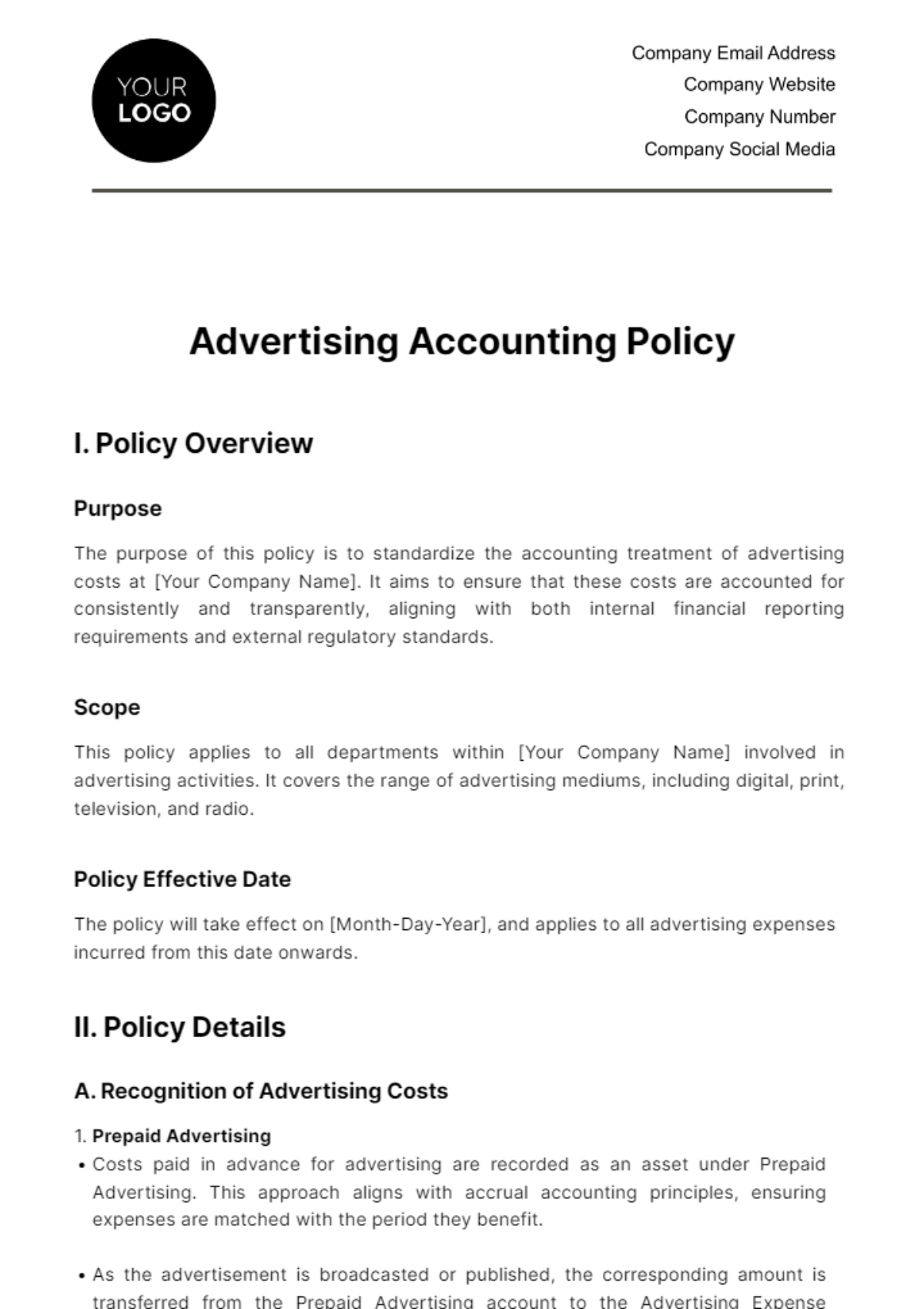
I. Policy Overview
Purpose
The purpose of this policy is to standardize the accounting treatment of advertising costs at [Your Company Name]. It aims to ensure that these costs are accounted for consistently and transparently, aligning with both internal financial reporting requirements and external regulatory standards.
Scope
This policy applies to all departments within [Your Company Name] involved in advertising activities. It covers the range of advertising mediums, including digital, print, television, and radio.
Policy Effective Date
The policy will take effect on [Month-Day-Year], and applies to all advertising expenses incurred from this date onwards.
II. Policy Details
A. Recognition of Advertising Costs
Prepaid Advertising
Costs paid in advance for advertising are recorded as an asset under Prepaid Advertising. This approach aligns with accrual accounting principles, ensuring expenses are matched with the period they benefit.
As the advertisement is broadcasted or published, the corresponding amount is transferred from the Prepaid Advertising account to the Advertising Expense account.
Advertising Expense Recognition
Expenses are recognized in the period the advertisement is aired, aligning the cost with the corresponding revenue period.
For ongoing campaigns, expenses are allocated evenly across the duration of the campaign, ensuring a consistent and fair representation of advertising costs in each accounting period.
B. Measurement of Advertising Costs
Direct Costs
These include costs that can be directly attributed to specific advertising activities, such as fees paid to advertising agencies, costs of producing commercials, and the purchase of media space.
Direct costs are measured at their invoice value, ensuring simplicity and consistency in accounting treatment.
Indirect Costs
Indirect costs are those that cannot be directly linked to specific advertising activities but are necessary for the execution of these activities.
These costs are allocated based on a systematic and rational basis, ensuring a fair and reasonable distribution of costs to various advertising activities.
C. Documentation and Record Keeping
Invoices and Contracts
Maintaining a comprehensive record of all advertising-related invoices and contracts is crucial for audit and review purposes.
Contracts should detail the nature, duration, and cost of advertising services, providing a clear basis for expense recognition and measurement.
Expense Reports
Detailed monthly reports on advertising expenses, broken down by category, campaign, and medium, provide critical insights into advertising spend and its effectiveness.
Regular reporting also facilitates timely identification and correction of any discrepancies or issues.
III. Budgeting and Approval
A. Annual Advertising Budget
Budget Preparation
The Marketing Department, in coordination with Finance, develops a comprehensive budget that takes into account historical spend, market trends, and strategic objectives.
The budget is broken down into specific categories, such as digital advertising, print media, and television.
Budget Approval
The proposed budget is presented to the Board of Directors for approval, ensuring oversight and strategic alignment with the company's long-term vision.
Once approved, the budget becomes the guiding document for all advertising expenditures in the fiscal year.
B. Expense Authorization
Approval Authority
Advertising expenses exceeding a certain threshold require higher-level authorization to ensure they are in line with strategic objectives and budgetary constraints.
The Chief Marketing Officer, being responsible for the overall marketing strategy, is well-positioned to assess the necessity and potential impact of large advertising expenses, thereby ensuring judicious use of company funds.
Emergency Spending
In exceptional circumstances, such as a rapid market shift or an unforeseen opportunity, the policy allows for expedited approval processes. These instances, however, are closely monitored and reviewed post-authorization.
The CEO's authority to approve emergency spending reflects the importance of agility in the dynamic field of advertising, while still maintaining a check-and-balance system.
IV. Reporting and Compliance
A. Monthly Reporting
Expense Report
Detailed reports provide visibility into the actual spend against the budget. They are crucial for monitoring and controlling advertising expenses and are integral to financial planning and analysis.
These reports not only track expenditures but also offer insights into the effectiveness of different advertising channels and campaigns, aiding in future budgeting and strategic decisions.
Variance Analysis
Regular analysis of variances helps in understanding the reasons behind budget deviations, whether due to market conditions, operational efficiencies, or strategic shifts.
Significant variances are flagged for further investigation and action, ensuring that deviations are managed proactively and aligned with the company's overall financial health and objectives.
B. Compliance
Internal Audit
The Internal Audit Department periodically reviews advertising expenses and processes to ensure adherence to this policy and to identify areas for improvement.
Audit findings are reported to management and the Board, ensuring that any issues are addressed promptly and effectively.
External Reporting
Advertising expenses are a significant part of [Your Company Name]'s financial statements and must be reported accurately in accordance with Generally Accepted Accounting Principles (GAAP).
The Finance Department ensures that all advertising expenses are properly classified and disclosed in the company's external financial reports, providing a true and fair view of the company's financial position.
V. Amendments and Modifications
This policy is dynamic and can evolve to reflect changes in the business environment or accounting standards. The process for amending the policy is clearly defined to ensure orderly and transparent updates. Communication of these changes is essential for ensuring organization-wide adherence and understanding.
- 100% Customizable, free editor
- Access 1 Million+ Templates, photo’s & graphics
- Download or share as a template
- Click and replace photos, graphics, text, backgrounds
- Resize, crop, AI write & more
- Access advanced editor
Discover the Advertising Accounting Policy Template from Template.net. Crafted for clarity and precision, this editable and customizable tool simplifies your accounting process. Seamlessly integrate your company's guidelines with the AI Editor Tool, ensuring compliance with industry standards. Streamline your financial reporting effortlessly with this essential resource. Elevate your accounting practices today with our innovative template.
You may also like
- HR Policy
- Restaurant Policy
- Company Policy
- Accounting Policies and Procedures
- Website Policy
- Privacy Policy
- Safety Policy
- School Policy
- IT and Software Policy
- Law Firm Policy
- Construction Policy
- Interior Design Policy
- Travel Agency Policy
- Education Academic Policy
- Security Policy
- Real Estate Policy
- Expense Policy
- Software Policy

